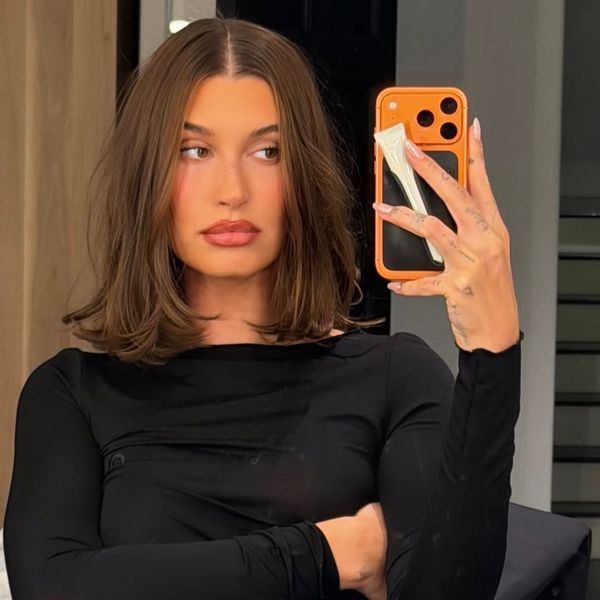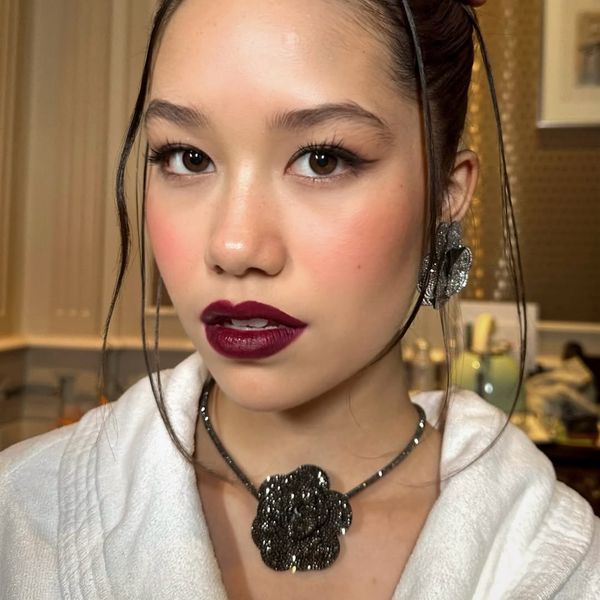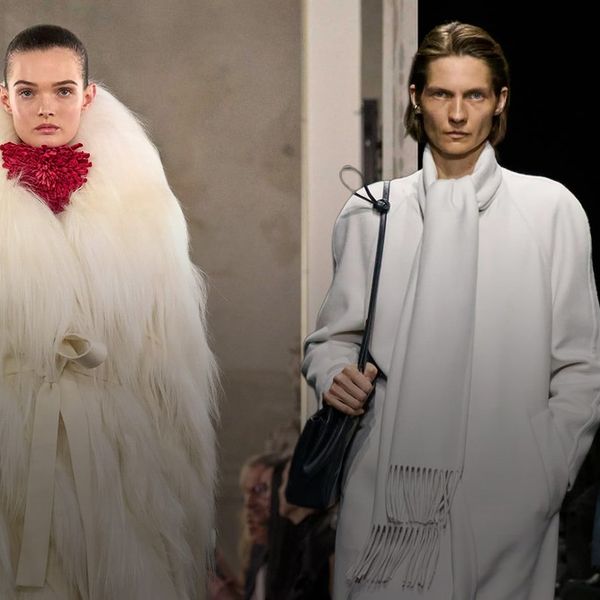This Season, “Dressing in the Dark” Gets A New Meaning
Backwards shirts and and off-kilter silhouettes reflect more than just a runway trend.
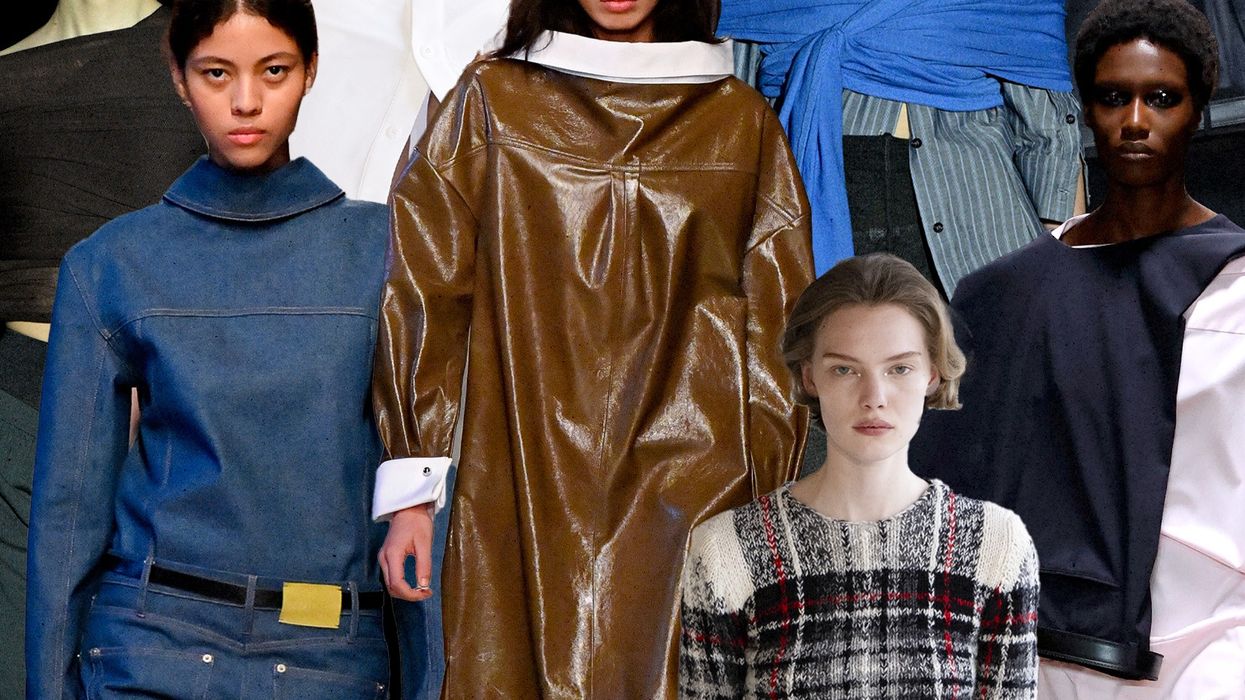
There were plenty of trends to behold on the Fall/Winter 2025 runways this past February. A surplus of fur, femininity, western wear (again) took over show spaces; poppy red and the return of the ‘80s silhouette was front and center. In the background, though, something a little less expected emerged.
Sarah Burton’s Givenchy debut was a hotly debated topic this season, and for good reason—there was much to have an opinion about. One of the most resoundingly positive moments, though, was a sharp wool grey V-neck blazer dress worn back to front and nipped at the waist. The proportions were all there. The collar and shoulder pads were raised slightly above the neckline to keep things feeling offbeat and powerful, while the length alone gave a sense of sexiness within the structured silhouette. Further along in the show, another appeared in black, both the neckline and hemline plunging lower. Elsewhere at Zomer, the opening look was an entirely reversed Canadian tuxedo, followed by a procession of backwards looks.
The backwards-ness of it all wasn’t what was totally unexpected—after all, designers have been toying with reversing classic shapes for decades. Take Celine Dion in her reversed white Dior couture suit at the 1999 Oscars, for example. But as the days, weeks, and moments began to add up, more and more there was a theme of things feeling just a bit “off”.

Zomer F/W25
SAVIKO/Getty Images
The discourse surrounding the global political climate right now is one of complete upheaval. You don't need to look to the runways to understand why, and it feels aligned that in a backwards society, designers like Zomer’s Danial Aitouganov decided to subvert conventional ways of wearing clothes. The conversation around challenging the “right way” of doing things has never felt more relevant within the context of the world today, and for F/W 25, much of engaging in this conversation was done through the wearing, and styling, of clothes.
Hodakova’s Ellen Hodakova Larsson has never been one to shy away from the role of politics in fashion. This was no exception for F/W '25. The dissonance and confusion we feel from simply existing was translated through flat folded pants with a hole for the head, skirts with belts at the knees, and shirts that had an upside-down short on the front of them. Elsewhere at The Row, cashmere stockings were worn as scarves, Paloma Wool’s layering was excessive and mismatched, and Duran Lantik’s skirts were men's button-down shirts with the sleeves hanging from the sides.
It was all very “dressing in the dark.” Throw it all on while the lights are out and hope for a good result. Only this time, the dark isn’t just our dimly-lit bedrooms in the wee hours in the morning, but a reflection of our collective anxiety over the state of the world. Here, the “dark” becomes reality (as morbid as it sounds), the feeling of discombobulation in our wardrobes a mirror to the uncertainty of what tomorrow brings.
When times are trying, how much thought should we be expected to put into our wardrobes?
For some designers, the act of disjointedness is motivated by a simple “F-you” to the idea of perfection. In an industry that is fueled by rampant consumerism, moments of creative reprieve can be welcomed through the lens of design that is debatably unwearable, unruly, and emancipated from convention.

Hodakova F/W25; Duran Lantink F/W25
Thierry Chesnot/Getty Images; Victor VIRGILE/Getty Images
Back in 2023 after the Fall/Winter show season closed out, many designers were toying with the same ideas (what goes around comes around). Tory Burch introduced a series of satin-y backwards dresses, noting that “women don’t want rules anymore.” While Duran Lantink experimented with a backward shirt that was fashioned into a slipdress, his thought process, too, was rooted in a sense of resistance, pushing back against what a “perfect” shirt means.
Certainly for the consumer, a statement about the political climate is not always the goal through our sartorial choices, so there is levity in these decisions, too. To Lantink’s sentiment, a silhouette being slightly off beat can serve as enough. The shapes at Zomer, Hodakova, and Givenchy this past season felt fresh and fun as much as they did a response. Burton’s blazer dresses offered a point of difference for the fashion-forward consumer’s next night-out dress, while Aitouganov’s backwards denim was not so obscure that it could not be wearable.
When Galliano created his backwards suit for Dior Haute Couture Spring/Summer 1999 (that Celine Dion would later wear at the Academy Awards), he was thinking about surrealism, more than he was upheaval. The movement was originally grounded in a need to question the norm and surface the subconscious—a sentiment that certainly feels apt in today’s framework. There are plenty of examples that speak to a collective need to shift the status quo and experiment with obscurity once again, adding fun and whimsy back into the conversation.
In the same breath, the connection between reversed silhouettes with turbulent times is no new correlation. Back in 1938, the late Elsa Schiaparelli introduced a backward suit in her Circus collection, which was shown a little over 12 months before the second World Wr. A sense of the unknown for the future opens us up to feelings of resistance through the way we dress. Rarely do moments emerge without a connection to what’s taking place off the runway.
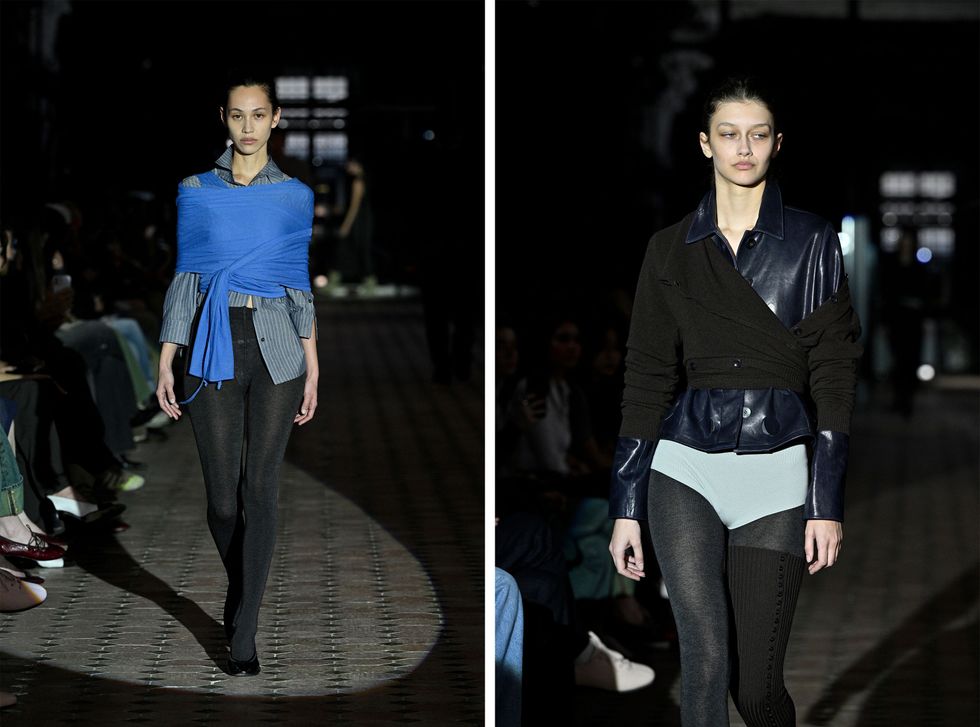
Paloma Wool F/W25
Kristy Sparow/Getty Images
Fashion has always been a mirror to what’s happening in the world. Take the punk movement, for example, lead by Dame Vivienne Westwood on the runway and the Sex Pistols off it, or the flappers of the 1920s, whose clothing choices directly influenced attitudes towards economic, political and sexual freedom for women. Second wave feminism saw the women’s liberation movement directly intersect with the power suit as women entered the workforce. Where fashion discord is present, global events won’t be far behind, and vice versa.
This idea of getting dressed in the dark, however, is much less specific. In turn, the trend feels more transient, more wearable, linked less to notable moments in the global lexicon and more to notable feelings. It is true that we do not know what our future holds, who will take political power, what kind of rights we will be able to retain, what the state of our economy will be in years or even months. What we do know, though, is that many of us are in the same boat, and if the way we dress is a sign of the times, we certainly are going backwards. Here, these sentiments don’t have to exist in a vacuum. There can be joy in a sense of discombobulation. In letting perfectionism fall to the wayside in pursuit of dreams and obscurity and conversation that diverts from the norm. In community mindset and finding comfort in the uncomfortable. Right now, it feels like the most viable option.

